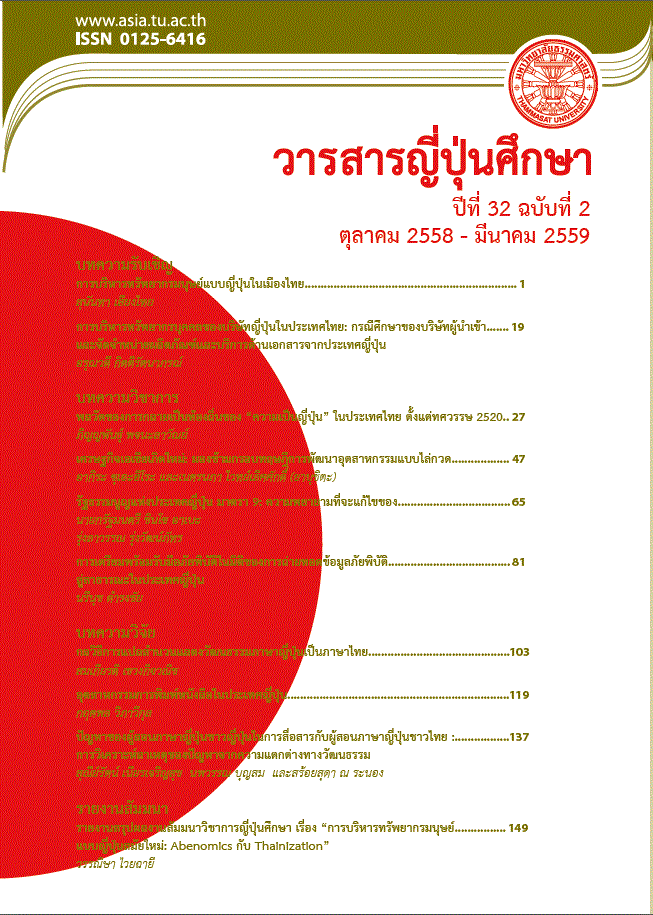อุตสาหกรรมการพิมพ์หนังสือในประเทศญี่ปุ่น
Abstract
The purpose of this research is to study how Japan able to publish many books and maintain a diversity of books in the Japanese book publishing industry. This research investigated
in-depth the following three topics: (1) the history of the Japanese book publishing industry;
(2) the industrial structure, distribution system and relationship between players in the Japanese book publishing industry who promote a diversity of books; and (3) changes in the Japanese book publishing industry in the digital age. The research method employed was to collect documents involved in the supply side of the publishing industry.
Research found that Japanese book publishing became a business in the Edo period and separated into three major players in the Meiji period. Nowadays, the industry consists of three major players: publishers, wholesalers and bookstores. Wholesalers have smaller numbers but significantly influence the oligopolistic industry. Wholesalers restrain distributing conditions
based on two major pillars, RPM and consignment sale systems. Moreover, cooperative behaviour
on the collective level between Japanese players has created the industry structure. These factors mainly promote the diversity of books and develop the unique characteristic of the Japanese industry.
In the digital age, the industry has dramatically declined and may be considered to be in a recession, while the electronic publishing market has continuously grown. However, the Japanese electronic book market faces a lack of diversity due to its own traditional book publishing industry’s culture, structure and distribution system, which does not support the
development of the electronic book market. At present, an effective system or model of sustainable
development between book publishing and electronic book publishing remains under study.




